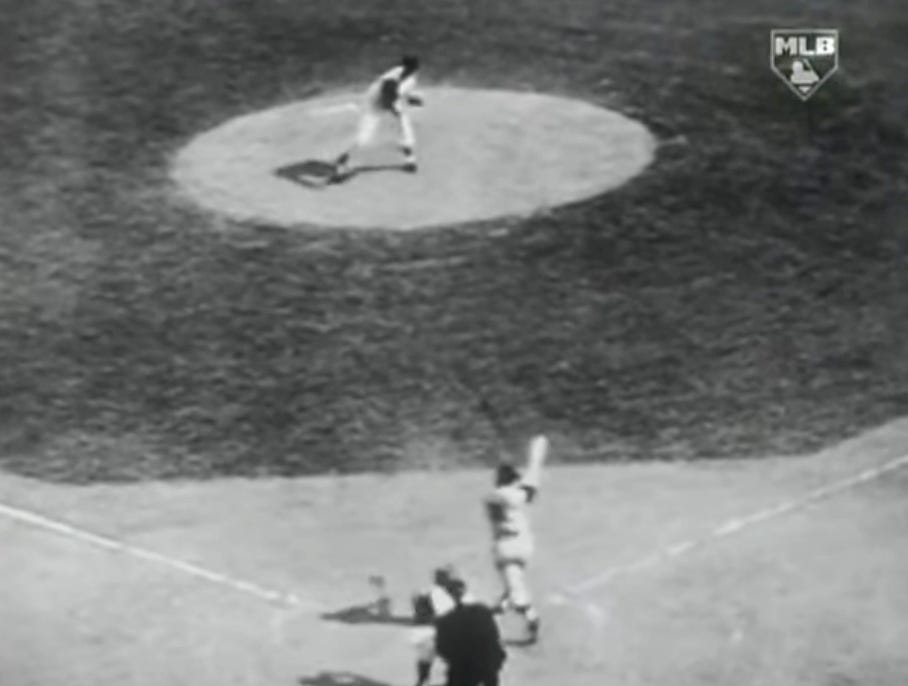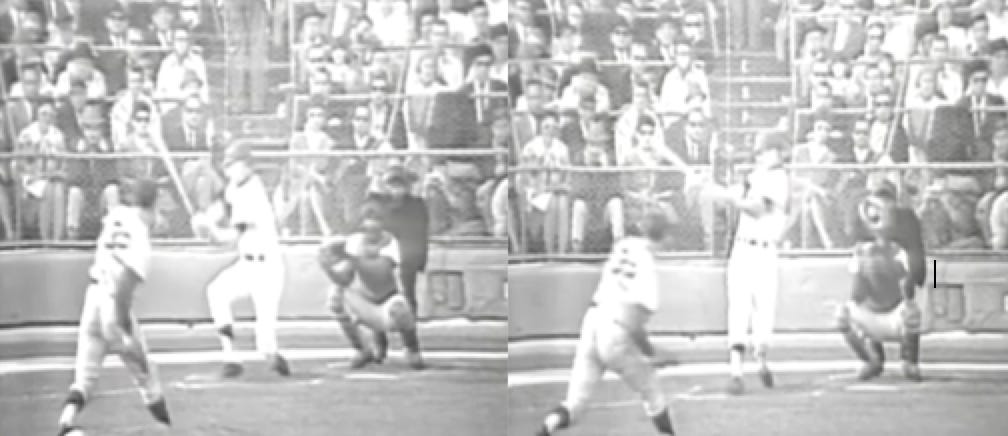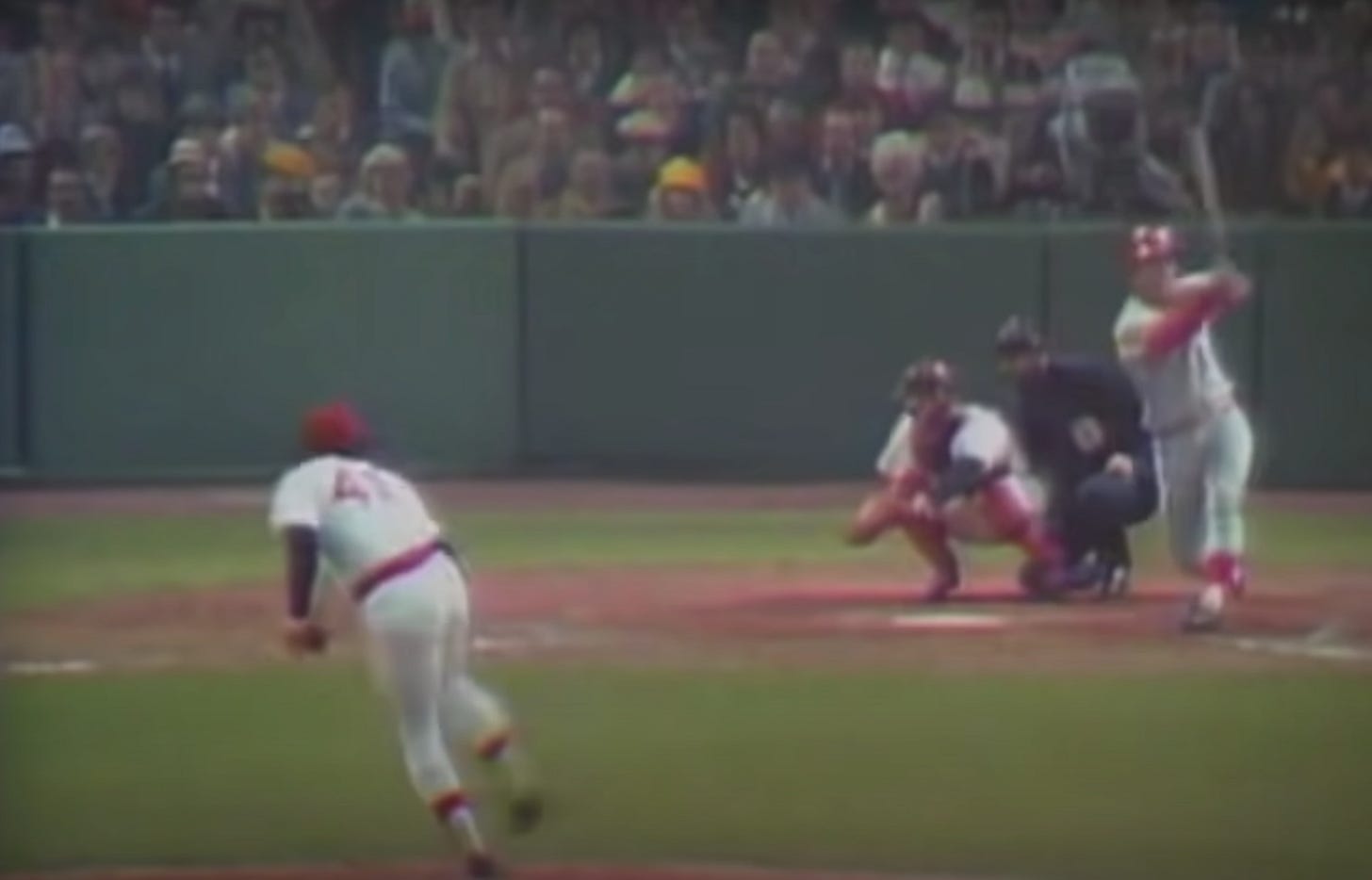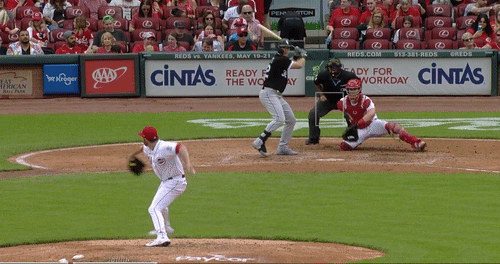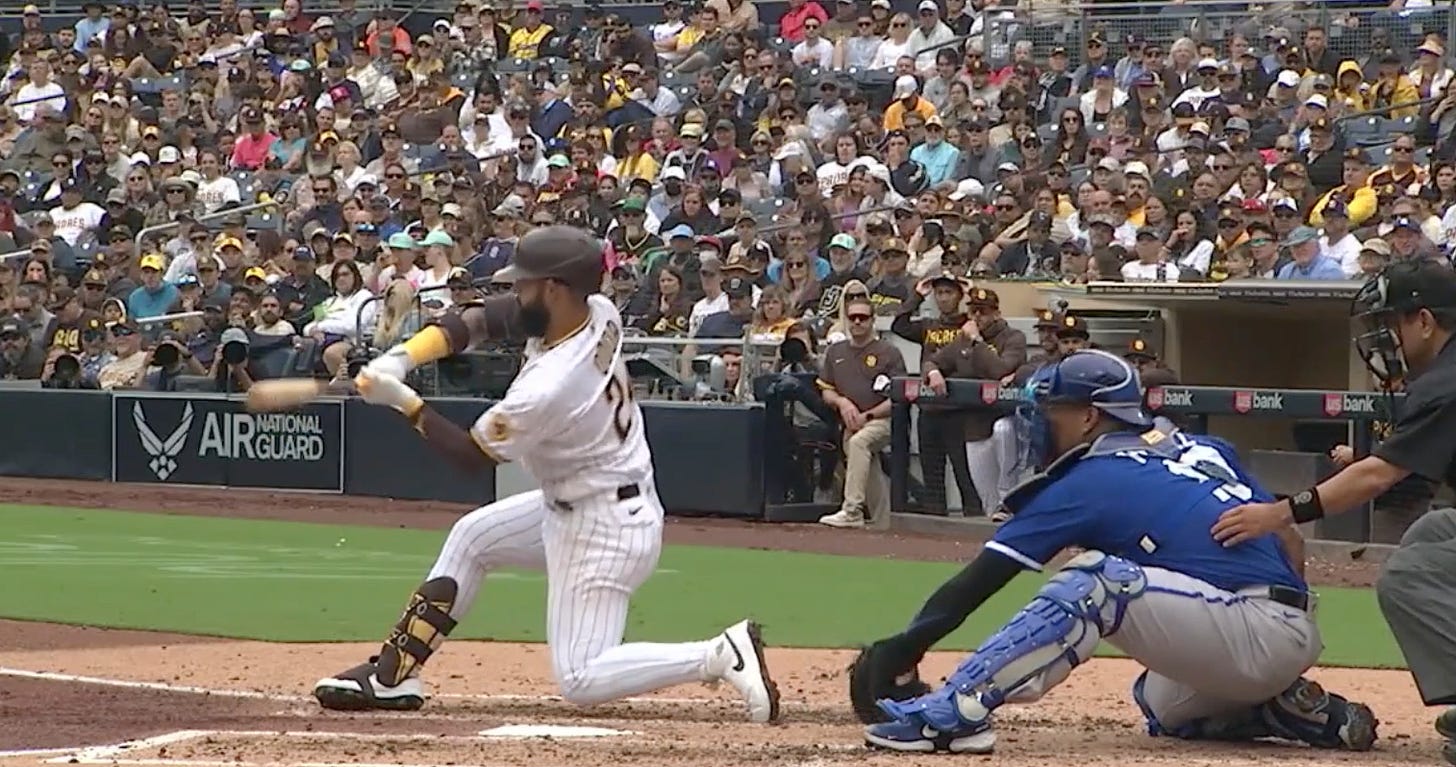What If All Checked Swings Were Just Balls?
Times change, and so does what we think the phrase "struck at" means.
Hal Smith batted with two outs and two on and his team trailing by one run in the eighth inning of the seventh game of the 1960 World Series. On a 1-2 count, he started to swing but was ruled to have held up in time:
Haha, that is an enormous swing. The bat not only crossed home plate but very nearly crossed the third-base foul line. But, on the broadcast of that game, the crowd issues only a slight murmur of concern that Smith might be called out. Some fan or teammate or coach yelling from off-screen: “Good eye, Hal, good eye.” Pitcher: One step toward the dugout, only one-step hopeful that he might get the strikeout. The broadcaster: “He started to swing and held off. The count is 2-2.”
On the next pitch, Smith homered. That home run is, by championship win probability added, the biggest hit in Major League history.
That no-swing call is not some accident of history. It’s how things were back then. Here’s a checked swing by the Yankees’ Tony Kubek, earlier in the same game, that was called no-swing:
And here’s a pair of no-swings by Don Mincher, against Sandy Koufax, on back-to-back pitches in the 1965 World Series:
Of course, that was before home plate umps were appealing to the base umps. But here’s Johnny Bench, in the 1975 World Series, on a checked swing that was appealed and ruled no-swing by the first-base ump:
We have come a long way. Here’s one ruled a swing this month:
This is all to say that a swing can be whatever we want it to be, and what we’ve wanted it to be has changed in the past and could change again. There is no rule to defines when a swing becomes a swing in professional baseball. There is only this: "A STRIKE is a legal pitch when so called by the umpire, which: (a) Is struck at by the batter and is missed." Any guidelines you might think you know about bats crossing the plane of home plate or batters breaking their wrists are made up, unofficial at best. All the umpire is asked to consider is whether the batter struck at the ball, and to that we tend mostly to just lean on cultural expectations, which can change.
But there is a commonsense understanding of the phrase “struck at” that could lead you to conclude that nobody who checks a swing before the pitch arrives has actually struck at it. This is what Bobby Valentine believes, among other people:
“It’s the most argued call in baseball,” Valentine said. “A strike should be when you make a full swing and everything else is a ball. It will add offense to the game, which we need, anyway.”
So, if Major League Baseball decided that all checked swings should be balls, then what would happen?
How Would It Affect Offense?
I watched every swinging strike from one day’s play—about 500 swinging strikes—and found 30 that I would call checked swings. About half of those were close enough, under the current standards, that the home plate umpire asked for the base umpire to make the call. The other half were clear enough by current standards that the home ump called them strikes all by himself, without an appeal.
If we switch all 30 strikes to balls, what happens? In the case of this 3-2 pitch to Joc Pederson, the likelihood of a strikeout in the plate appearance goes from 100 percent to 0 percent (because he would have walked). In the case of this 0-0 pitch to Esteury Ruiz, the count would only flip subtly from the pitcher’s favor to the hitter’s, and would flip the likelihood of a strikeout in the plate appearance from about 30 percent to about 19 percent. Collectively, those 30 strikes added about 12 expected strikeouts to the day’s product.
Twelve expected strikeouts isn’t that noticeable, spaced across 15 games and almost 5,000 total pitches. But it would cut the league’s strikeout rate from 8.6 per team per game to 8.2 per team per game, and it would do so without affecting the rest of the day’s 5,000 pitches in any way. The league could undo the past seven years of strikeout increases without changing anything about almost everything. That’s decent.
Ah, But How Would It Affect Our Frustration?
The checked swing has never been easy to call, and it’s among the most frustrating parts of the viewing experience—not only is it considered the hardest ruling for umpires to get “right,” but nobody can actually say what “right” is, because “right” literally does not exist. On top of that, the current point of delineation is arguably the most difficult part of the swing to discern, and our perception of swings is significantly affected by where the pitch is (inside or outside, high or low) and where the batter stands in the box.
A few days ago, the Padres had four checked swings against the Royals. One of them was by Jake Cronenworth
and one was by Rougned Odor:
Is there a distinction between those? If we use the “crossing home plate” reasoning, Odor definitely crossed home plate by more—but only because he stood further forward in the batter’s box. If we use a “head of the bat getting in front of the hands” standard, then Cronenworth’s bat may have gone slightly farther, but only because the pitch came well inside and he had to turn the rest of his body to avoid being hit. Personally, they look the same to me. Exactly one of them was called a strike1.
Keep reading with a 7-day free trial
Subscribe to Pebble Hunting to keep reading this post and get 7 days of free access to the full post archives.




